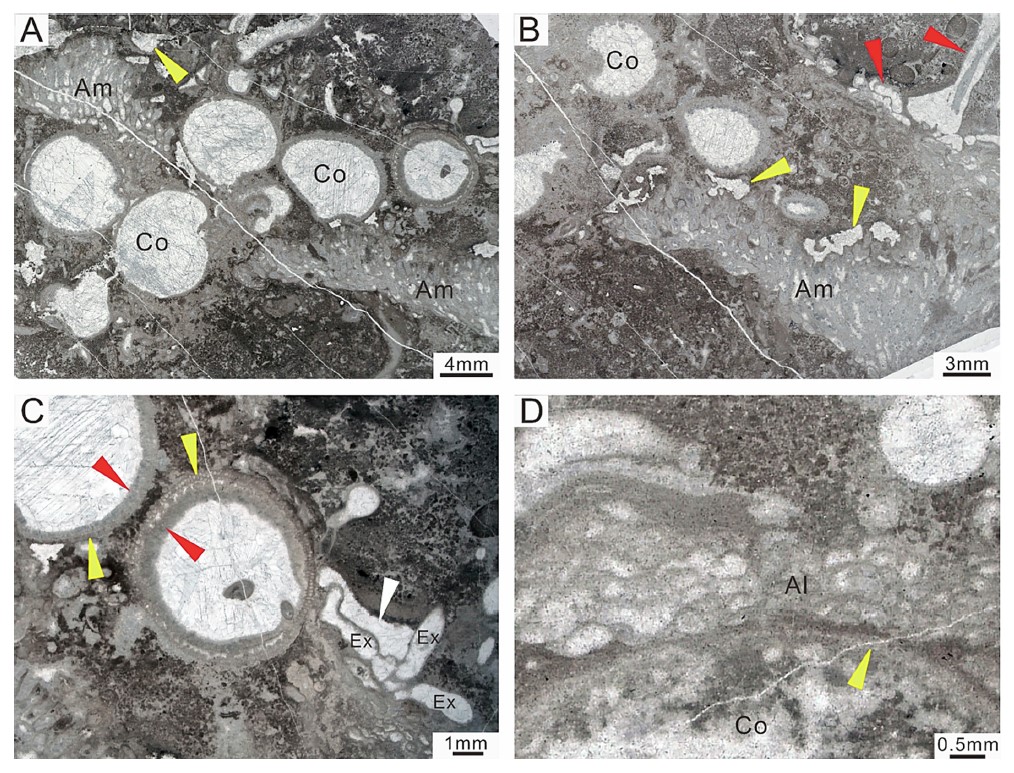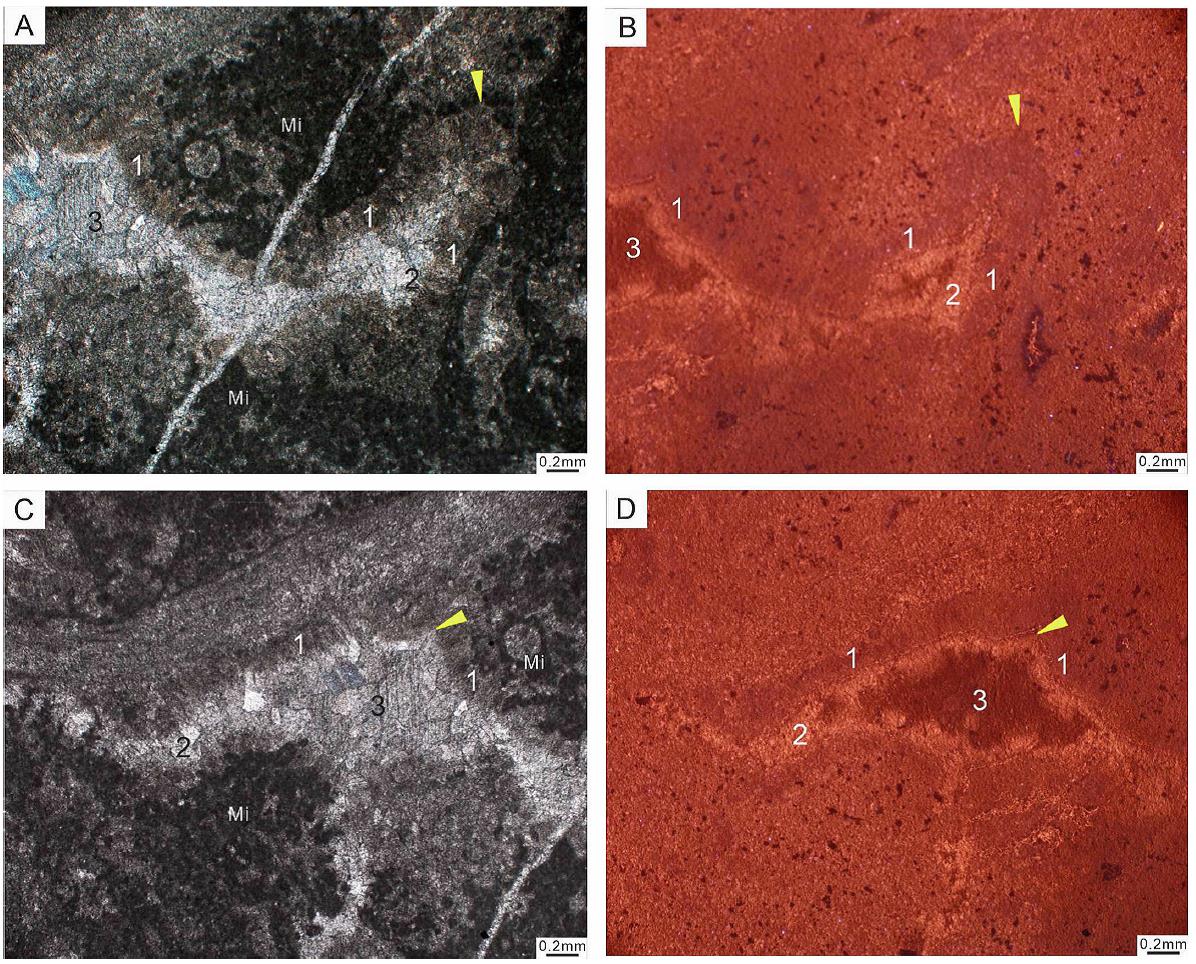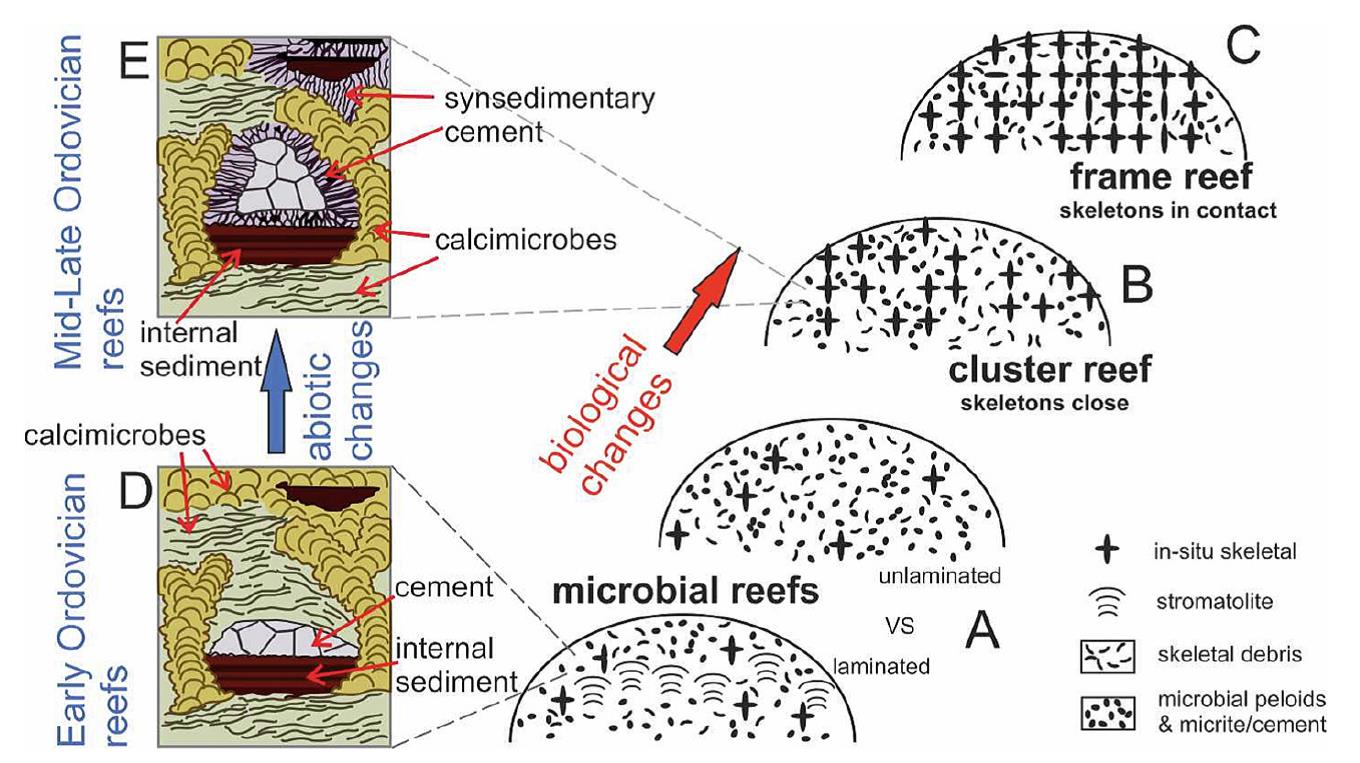Ordovician strata record a unique transition from microbial-dominated towards metazoan-dominated reefs. With their first radiation of sphinctozoan sponges during the Ordovician, they occur in thrombolites in South China, representing the initial expansion of sphinctozoan-grade sponges from level bottom to reef settings. Most previous studies mainly focused on the substantial ecological changes in the reef ecosystem. However, little is known about how abiotic carbonate precipitates link to the transition in biotic composition during the Great Ordovician Biodiversification Event.
Recently, Associate Research ProfessorLI Qijian Li and Research ProfessorLI Yue from the Nanjing Institute of Geology and Palaeontology, Chinese Academy of Sciences (NIGPAS) and their collaborators, have reported Late Ordovician sphinctozoan-bearing microbial reefs on the Zhe-Gan Platform, South China. The study entitled “Katian (Late Ordovician) sphinctozoan-bearing reefs: Hybrid carbonates before the glacial maximum” has been published in Palaeogeography,Palaeoclimatology,Palaeoecology.
The reefs show a three dimensional skeletal framework that is mainly constructed by Corymbospongia and Amsassia. Microbes and subsequent cementation cover the primary skeletons, enhancing the stability of the framework (Fig.1). Isopachous crystalline crusts are distinct in the boundstone of the reefs (Fig.2).
Submarine synsedimentary cementation is critical to stabilization of reef frameworks and to limit mechanical erosion. Large amounts of marine cements are widely developed in modern tropical reefs, while early marine cementation has been rarely reported as an important process to promote carbonate accumulation in the early Palaeozoic reefs.
The skeletal-microbial-cement reefs of the Sanqushan Formation share many similarities with reefs reported from contemporaneous strata in North China and Central Nepal. The substantial synsedimentary cementation on the seafloor found in this study provide key evidence to understand the complex feedback relationships between eco-evolutionary dynamics and early diagenesis in Late Ordovician reefs during the icehouse conditions (Fig.3).
Reference: Li, Q.J.*, Na, L., Yu, S.Y., Mao, Y.Y., Kershaw, S., Yue, L., 2023. Katian (Late Ordovician) sphinctozoan-bearing reefs: Hybrid carbonates before the glacial maximum. Palaeogeography, Palaeoclimatology, Palaeoecology. 624(15): 111642. https://doi.org/10.1016/j.palaeo.2023.111642.

Thin section photomicrographs of the Corymbospongia-Amsassia framestone. A) Overview of the framestone, showing the scaffold structure of crowded Corymbospongia (Co) and Amsassia (Am); B) Detail of the framework constructed by the intertwined Corymbospongia (Co) and Amsassia (Am), showing exaulos tubes (red arrows) of sphinctozoans and a few small cavities (yellow triangles); C) Close-ups of the framestone showing the details of sphinctozoan chambers (yellow triangles) and exaulos tubes (Ex). Note that red triangles indicate isopachous cements in the chambers, while red triangles indicate a small cavity; D) Allonema (Al) encrusts skeletons of Corymbospongia (Co). Yellow triangles indicate the wall of a chamber. (For interpretation of the references to colour in this figure legend, the reader is referred to the web version of this article.)

Details of abiotic cements, taken under (A & C) stereomicroscope and (B & D) cathodoluminescence microscope. 1: isopachous cement, 2: the second generation of cement, 3: the third generation of cement, Mi: microbial fabrics. Yellow triangles show matched points between stereomicroscope and cathodoluminescence photos. (For interpretation of the references to colour in this figure legend, the reader is referred to the web version of this article.)

The principal types of reefs in Ordovician (A-C). Category C possesses a macroskeletal framework. In category B, the skeletal forms are locally juxtaposed. Category A is the microbial reefs; D-E) Microscopic textures of the reefs, showing the changes in early diagenesis from Early Ordovician to Mid-Late Ordovician reefs.
Contact:
LIU Yun, Propagandist
Email: yunliu@nigpas.ac.cn
Nanjing Institute of Geology and Palaeontology, Chinese Academy of Sciences
Nanjing, Jiangsu 210008, China
Download:
